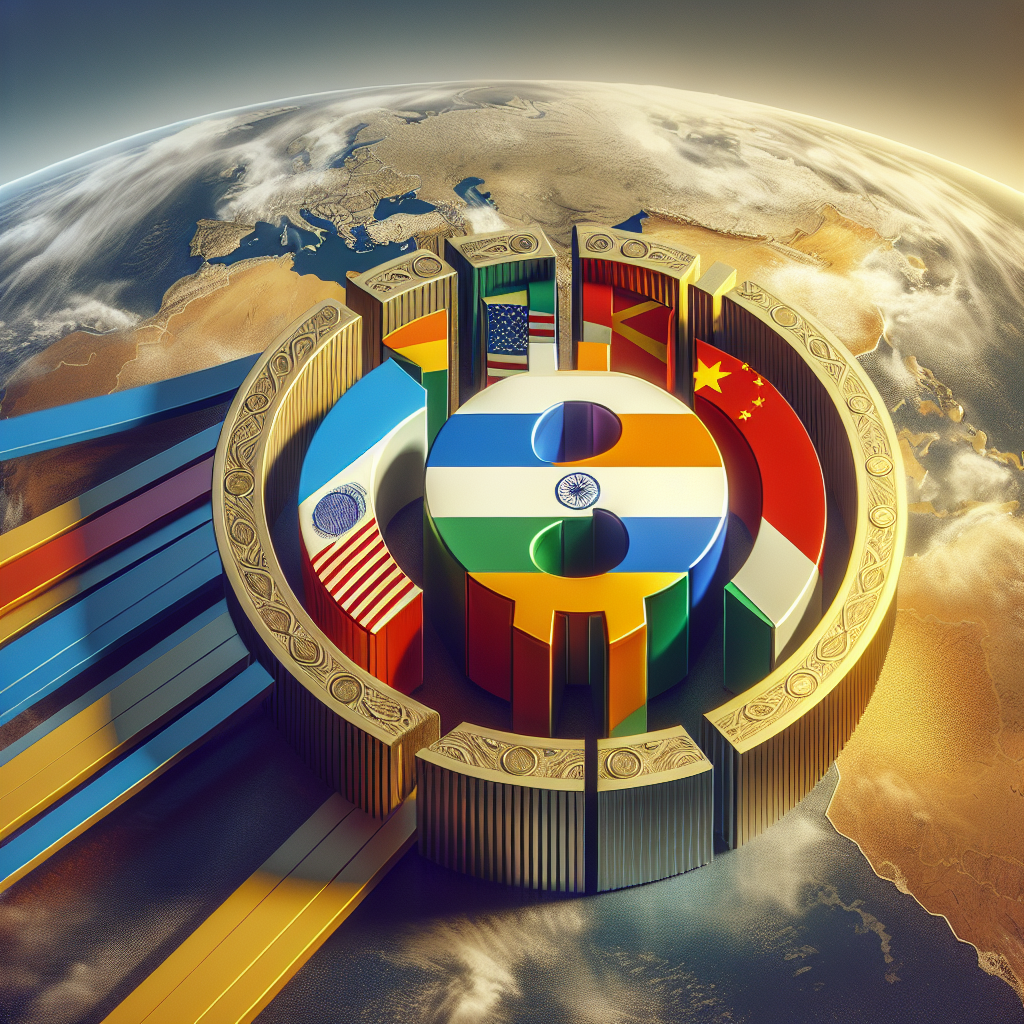Communist China and its self-proclaimed “BRICS” closest economic partners are hoping for a new currency to replace the US dollar as the world’s premier reserve currency. They aim to achieve this goal by establishing a new “BRICS” currency.
The US dollar currently serves as the standard currency for international trade, such as in the oil and natural gas markets. The currency of BRICS countries, particularly if widely used under Beijing’s control, could be utilized to sanction the United States and enhance BRICS dominance in international trade.
President-elect Donald Trump opposed the BRICS currency and during his campaign stated that countries attempting to create alternative currencies to counter the US dollar would face consequences. On November 30, he explicitly outlined this consequence: imposing a 100% tariff on countries establishing a single BRICS currency or seeking to replace the dollar as the international reserve currency. Trump stated that he would demand commitments from BRICS countries not to create a new currency to replace the dollar. In a post on the social media platform X, he wrote, “Otherwise, they must be prepared to bid farewell to the great American market.”
Trump’s threat of imposing a 100% tariff on BRICS countries immediately extracted a cost from them. He is essentially implementing what game theory refers to as “separation equilibrium,” distinguishing between good and bad from the perspective of the United States. Countries vehemently opposed to the dominance of the US dollar in the global economy, such as Russia, China, and Brazil, will likely refuse to make commitments, indicating their anti-American stance and deserving of 100% tariff punishment. Countries less resistant to the US dollar, such as India and South Africa, may opt to oppose the BRICS currency, creating divides between these countries and other BRICS members.
Maintaining the US dollar as a medium of international trade is advantageous to the United States and democracy. It ensures the US’s ability to impose sanctions on countries violating human rights and encroaching on the borders of American allies. This is beneficial to democracy, as the necessity of dollar trade and international transfers through US banks exacerbates the ease of sanctioning dictators in BRICS countries when serious human rights violations occur.
The term BRICS, referring to Brazil, Russia, India, China, and South Africa, was coined by former Chief Economist of Goldman Sachs Jim O’Neill. These countries were once considered pivotal “emerging markets,” making them an attractive choice for growth-oriented investors. While BRICS countries have received acclaim at global academic conferences, possibly due to their donations, those days have passed. Nevertheless, BRICS countries persist, becoming increasingly powerful with the addition of new member countries, primarily led by backers in Beijing. On January 1, 2024, Saudi Arabia, Egypt, the UAE, Iran, and Ethiopia officially joined BRICS.
Some experts believe Trump’s imposition of tariffs on BRICS countries is unnecessary as these countries have made limited progress on the proposed currency issue. However, their anti-freedom intentions are evident as most are authoritarian or totalitarian regimes. Clearly, they are attempting to create a new BRICS currency to shield their economies from sanctions. They openly plot nefarious actions like invading Taiwan and protecting themselves from sanctions. If they do not encounter resistance from the US and its allies, they are likely to persist, devising more effective strategies to eventually achieve their goals: invading neighboring countries, weakening the US, and diminishing our ability to spread democratic values globally.
Another reason opposing the imposition of tariffs on BRICS countries, especially those seeking to launch a BRICS currency to replace the dollar, is that it essentially taxes consumers, though the situation is more complex. In some cases, consumers may not bear the cost directly, as importers, manufacturers, or specific countries take measures to maintain consumer prices at pre-tariff levels to safeguard their market share or total exports. At a national level, this may entail increasing subsidies to exporters or devaluing their currency.
For instance, according to JPMorgan’s analysis, Beijing might devalue the Renminbi by 10-15% to counter Trump’s tariffs. If Trump raises tariffs on China by 15%, and the Chinese government devalues the Renminbi by 15% relative to the dollar, the impact on consumers would be mitigated (although US exports to China may decrease). JPMorgan forecasts that emerging market currencies will on average depreciate by 5% in the first two quarters of 2025.
Many economists find it challenging to acknowledge that former President Barack Obama also implemented measures akin to tariffs on foreign countries, albeit in a different form. For instance, he supported the Trans-Pacific Partnership (TPP) free trade agreement signed with many Asian countries, encompassing environmental and labor requirements. These requirements brought new costs to consumers for goods, similar to tariffs being a cost. Both impose costs on foreign producers to gain access to the US market. Part of the costs of the TPP would be shifted to American consumers in the form of price increases due to rising production costs, while some would not be. Many economists supported Obama’s tariffs as beneficial from the US perspective, viewed as concession, but criticized Trump’s tariffs since they directly benefited the US Treasury.
Imposing tariffs on BRICS countries, especially those seeking to introduce a BRICS currency to supplant the dollar, will help reduce the authoritarian group’s chances of dominating the global economy in the future, a dominance that is detrimental to the United States and the world.

